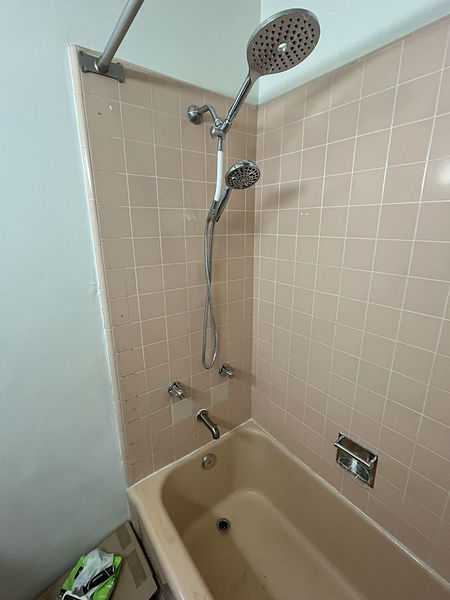
-
Assessment & Preparation: Our team will inspect the fixtures to identify the problem and determine whether they can be repaired or need to be replaced. We’ll turn off the water supply to prevent leaks during the work.
-
Remove Old Fixtures:
-
For repairs, we’ll disassemble the fixture and replace any worn-out parts, such as washers, cartridges, or seals.
-
For replacements, we’ll carefully remove the old fixtures, including the showerhead, handles, or faucets, and disconnect them from the plumbing.
-
-
Install New Fixtures: We’ll install the new shower fixtures or reassemble the repaired ones, ensuring they’re properly connected to the plumbing and securely fastened.
-
Test the System: After installation, we’ll turn the water supply back on and test the fixtures for proper function, checking for leaks and ensuring water pressure and temperature are just right.
-
Clean Up: Our team will clean the work area, leaving your shower fixtures in excellent condition and fully operational.
We ensure quick and efficient service, so your shower is running smoothly again in no time!
Shower Fixtures
Here are several reasons why you might need to fix or replace your shower fixtures:
-
Leaks: If the fixtures are leaking water, whether from the showerhead, handles, or the faucet, it can cause water damage over time. A simple fix like replacing washers or seals can solve the issue.
-
Low Water Pressure: If the shower pressure is weak or inconsistent, it may be due to clogged showerheads or valves, which can often be cleaned or repaired.
-
Dripping Faucets: A faucet or handle that continues to drip after being turned off could be a sign of worn-out components like the valve or cartridge, which can be fixed with a repair.
-
Broken or Stiff Handles: If the shower handles are difficult to turn or completely broken, fixing or replacing them can restore easy control of your shower.
-
Rust or Mineral Buildup: Over time, mineral deposits or rust can accumulate on the fixtures, causing them to lose efficiency or appearance. These can often be cleaned or replaced if the buildup is too severe.
-
Noisy Fixtures: If your fixtures are making strange noises (like a buzzing or vibrating sound), this could indicate an issue with the internal components, which can often be fixed with repairs.
-
Frequent Repairs: If you’ve had to repeatedly repair the same fixture, it might be time to replace it entirely to avoid ongoing issues.
-
Old or Outdated Fixtures: Older fixtures, especially those with outdated designs or materials, may not be as efficient or reliable. Replacing them with newer models can improve functionality and aesthetic appeal.
-
Corrosion or Damage: If the fixtures are heavily corroded, cracked, or rusted, they may need replacing to prevent further damage to the plumbing or surrounding areas.
-
Leaks That Can't Be Fixed: If persistent leaks continue after repeated attempts at repair, replacing the fixture may be the only way to resolve the issue completely.
-
Upgrading for Better Performance: If you want a more powerful showerhead, a sleek new design, or water-saving features, replacing the fixtures can improve both functionality and efficiency.
-
Changing Bathroom Aesthetic: If you're remodeling your bathroom, replacing old fixtures with newer ones can enhance the overall look and feel of the space.
If any of these apply, fixing or replacing your shower fixtures can improve both the performance and the appearance of your shower while preventing further damage.